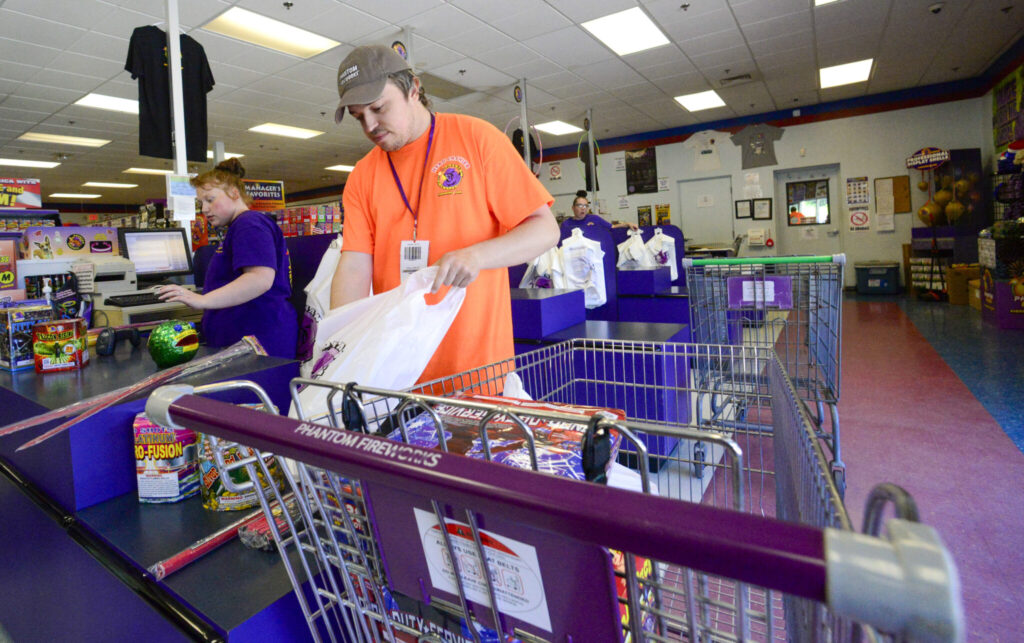Year-over-year inflation reached its lowest level in more than three years in July, the latest sign that the worst price spike in four decades is fading and setting up the Federal Reserve for an interest rate cut in September. Wednesday’s report from the Labor Department showed that consumer prices rose just 0.2% from June to July after dropping slightly the previous month for the first time in four years. Measured from a year earlier, prices rose 2.9%, down from 3% in June. It is the mildest year-over-year inflation figure since March 2021. The government said nearly all the increase last month reflected higher rental prices and housing costs, a trend that, according to real-time data, is easing.
Quick Read
- Year-over-year inflation in the U.S. dropped to its lowest level in over three years in July, with consumer prices rising just 0.2% from June to July and 2.9% compared to a year earlier.
- The decline in inflation sets the stage for the Federal Reserve to potentially cut interest rates in September, with economists widely expecting the first rate cut since 2020.
- Core inflation, which excludes food and energy, also showed signs of slowing, rising 0.2% from June to July and 3.2% year-over-year, the lowest since April 2021.
- Fed Chair Jerome Powell has indicated that additional evidence of slowing inflation is needed before cutting rates, with the next decision expected at the Fed’s September meeting.
- The Federal Reserve’s potential rate cut could lower borrowing costs for consumers and businesses, with mortgage rates already declining in anticipation.
- Inflation has been a key issue in the upcoming presidential election, with former President Donald Trump blaming the Biden administration’s policies for price increases, while Vice President Kamala Harris has promised new proposals to lower costs.
- Grocery prices remained largely unchanged from June to July, though food costs have increased about 21% over the past three years, adding pressure to family budgets.
- Economists expect continued cooling inflation in the coming months, with Fed officials like Raphael Bostic suggesting that rate cuts are likely, though they await more data to confirm the trend.
- Global supply chain repairs, a boom in apartment construction, and higher interest rates slowing auto sales have all contributed to the reduction in inflation.
- Some services, like auto insurance and healthcare, continue to see rising prices, but these are expected to eventually grow more slowly.
- As inflation declines, the Fed is increasingly focused on the job market, with a recent report showing a slowdown in hiring and a slight rise in unemployment to 4.3%, which has led economists to predict multiple rate cuts by the end of the year.
- Despite the rise in unemployment, which is attributed to an influx of job-seekers rather than layoffs, the labor market remains strong, supporting continued consumer spending.
- The government’s upcoming retail sales data is expected to show modest increases in consumer spending, which would likely support job retention and potential staff additions by businesses.
The Associated Press has the story:
US inflation slowed again in July, clearing the way for Fed to begin cutting rates
Newslooks- WASHINGTON (AP) —
Year-over-year inflation reached its lowest level in more than three years in July, the latest sign that the worst price spike in four decades is fading and setting up the Federal Reserve for an interest rate cut in September. Wednesday’s report from the Labor Department showed that consumer prices rose just 0.2% from June to July after dropping slightly the previous month for the first time in four years. Measured from a year earlier, prices rose 2.9%, down from 3% in June. It is the mildest year-over-year inflation figure since March 2021. The government said nearly all the increase last month reflected higher rental prices and housing costs, a trend that, according to real-time data, is easing.
For months, cooling inflation has provided gradual relief to America’s consumers, who were stung by the price surges that erupted three years ago, particularly for food, gas, rent and other necessities. Inflation peaked two years ago at 9.1%, the highest level in four decades. Inflation has taken a central role in the presidential election, with former President Donald Trump blaming the Biden administration’s energy policies for the price increases. Vice President Kamala Harris on Saturday said she would soon unveil new proposals to “bring down costs and also strengthen the economy overall.”

Excluding the volatile food and energy categories, so-called core prices climbed 0.2% from June to July, after a 0.1% increase the previous month. Compared to a year ago, core inflation rose 3.2%, down from 3.3% in June, the lowest since April 2021. Core prices are closely watched by economists because it typically provides a better read of where inflation is headed.Fed Chair Jerome Powell has said he is seeking additional evidence of slowing inflation before the Fed begins cutting its key interest rate. Economists widely expect the Fed’s first rate cut to occur in mid-September.
When the central bank lowers its benchmark rate, over time it tends to reduce the cost of borrowing for consumers and businesses. Mortgage rates have already declined in anticipation of the Fed’s first rate reduction. If the Federal Reserve needs any further evidence that the worst price spike in four decades is steadily easing, it’s likely to come Wednesday, when the government is expected to report that inflation cooled further last month.
Consumer prices are thought to have risen just 0.2% from June to July, according to economists surveyed by FactSet, a pace only slightly above the Fed’s 2% annual inflation target. Measured from a year earlier, inflation is forecast to have remained 3%, the same as in June. Excluding volatile food and energy costs, so-called core prices are also expected to have risen 0.2% from June and 3.2% from 12 months earlier, just below the 3.3% annual increase in June.
For months, cooling inflation has provided gradual relief to America’s consumers, who were stung by the price spikes that erupted three years ago, particularly for food, gas, rent and other necessities. Inflation peaked two years ago at 9.1%, the highest level in four decades. Inflation has taken a central role in the presidential election, with former President Donald Trump blaming the Biden administration’s energy policies for the price spikes. Vice President Kamala Harris on Saturday said she would soon unveil new proposals to “bring down costs and also strengthen the economy overall.”
Grocery prices are expected to have been largely unchanged from June to July, according to economists at UBS. Over the past year, food prices are up just 1.1%. Still, food costs have soared roughly 21% in the past three years, squeezing many family budgets. Fed Chair Jerome Powell has said he is seeking additional evidence of slowing inflation before the Fed begins cutting its key interest rate. Economists widely expect the Fed’s first rate cut to occur in mid-September.
When the central bank lowers its benchmark rate, over time it tends to reduce the cost of borrowing for consumers and businesses. Mortgage rates have already declined in anticipation of the Fed’s first rate reduction.
At a news conference last month, Powell said that cooler inflation data this spring had strengthened the Fed’s confidence that price increases are falling back to a 2% annual pace. Inflation was low in May, and overall consumer prices slipped 0.1% in June, the first decline in four years. “It’s just a question of seeing more good data,” Powell said. Another inflation report will be issued next month before the Fed’s Sept. 17-18 meeting, with economists expecting that report to also show that price increases remained mostly tame.
Raphael Bostic, president of the Fed’s Atlanta branch, sounded more explicit about rate cuts in remarks he made Tuesday: “Yes, it’s coming,” Bostic said in Atlanta to the Conference of African American Financial Professionals. “I want to see a little more data. … We need to make sure the trend is real … but it is coming.”
Inflation has eased substantially in the past two years as global supply chains have been repaired, a spate of apartment construction in many large cities has cooled rental costs and higher interest rates have slowed auto sales, forcing dealers to offer better deals to potential car buyers. Consumers, particularly lower-income ones, are also becoming more price-sensitive, forgoing high-priced items or shifting to cheaper alternatives. This has forced many companies to rein in price hikes or even offer lower prices.
Prices are still rising sharply for some services, including auto insurance and health care. Auto insurance costs have shot up as the value of new and used vehicles has soared compared with three years ago. Economists, though, expect those costs to eventually grow more slowly. As inflation continues to decline, the Fed is paying increasingly close attention to the job market. The central bank’s goals, as defined by Congress, are to keep prices stable and support maximum employment.
This month, the government reported that hiring slowed much more than expected in July and that the unemployment rate rose for a fourth straight month, though to a still-low 4.3%. The figures roiled financial markets and led many economists to boost their forecasts for interest rate cuts this year. Most analysts now expect at least three quarter-point rate cuts at the Fed’s September, November and December meetings. The Fed’s benchmark rate is at a 23-year high of 5.3%.
Still, the rise in the unemployment rate has reflected mainly an influx of job-seekers, especially new immigrants, who haven’t immediately found work and so have been classified as unemployed. That is a much more positive reason for a higher unemployment rate than if it came from a jump in layoffs. Measures of job cuts remain low. On Thursday, the government will release its latest data on retail sales, which are expected to show that consumers increased their spending modestly in July. As long as shoppers are willing to spend, businesses are likely to hold onto their workers and may even add staff.







